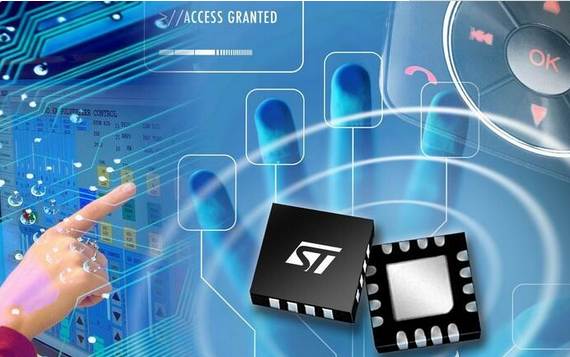
A good 'smart sensor' is a microprocessor-driven sensor and meter package with communications and on-board diagnostics. Smart sensors can detect the various physical quantities stored, and follow the instructions to process the data, to create new data. Intelligent sensors can exchange information, and can self-determination should be transmitted data, give up abnormal data, complete analysis and statistical calculations.
The "Three-year Action Plan for Promoting the Development of a New Generation of Artificial Intelligence Industry" issued by the Ministry of Industry and Information Technology specifies the direction for the development of artificial intelligence from 2018 to 2020. The focus of the plan is to cultivate eight smart products and four core foundations, and smart sensors are at the forefront of the core foundations, at the most basic and most important position.
Everything connected technology chain
How are sensors, big data, machine learning, artificial intelligence, and robots screwed together? In the era of artificial intelligence hardware and software are symbiotic evolution, affect each other? The "Internet of Things", "Big Data" and "Robots," etc., are in fact linked to each other and become a general trend. In this chain, each ring will have an impact on the next ring, thus generating positive The cycle. The sensors in various connected devices generate large amounts of data. Massive data makes machine learning possible. The result of machine learning is AI, which in turn guides the robot to perform tasks more precisely, and the robot's actions trigger the sensor. This whole is a complete cycle.
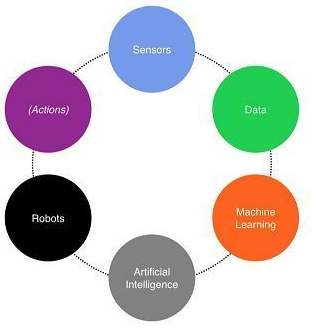
1. Sensor generates data
By 2014, the number of devices connected to the Internet has exceeded the total population of the world. Cisco predicts that by 2020, there will be 50 billion connected devices. And most of these devices will be sensors, sensors may be embedded with Electric Imp, or a sensor connected to the Estimote. Sensors in the device produce vast amounts of data like never before.
2. Data support machine learning
In 2020, an estimated 35ZB of data is generated, which is 44 times the amount of data in 2009. By that time, either structured or, more likely, unstructured data can be machine-processed to gain insight.
3.Machine learning to improve AI
Machine learning relies on data processing and pattern recognition, allowing computers to learn without programming. Now massive amounts of data and computing power are driving a breakthrough in machine learning. Full power of machine learning, take a look at Google to know. Google used machine learning to map the location of every business in France, every home, and every street on the map. The whole process takes only 1 hour.
4. Artificial Intelligence guides the robot to action
As computers have done better than humans in chess and road signs, we have reason to expect more in the future. As more sensors gather more data, which optimizes more machine learning algorithms, we can reasonably conclude that the robot-combined computer's ability to perform tasks increases exponentially.
5.Robot to take action
Not only do hundreds of companies produce robots that can do all kinds of work, but the robots themselves are becoming smarter and, with the help of AI, they can accomplish a lot of the tasks we all dreamed of.
6. Action trigger sensor
The machine takes action to trigger the sensor to collect the data, so the entire cycle is complete. This is the entire artificial intelligence ecosystem technology chain.
Artificial intelligence technology to optimize sensor system
Artificial intelligence technologies can be helpful for sensor systems: knowledge-based systems, fuzzy logic, automatic knowledge gathering, neural networks, genetic algorithms, case-based reasoning, and environment intelligence. These technologies are becoming more widely used in sensor systems not only because they are effective but also because of the growing popularity of computer applications today. These artificial intelligence techniques have the lowest computational complexity and can be applied to small sensor systems, single sensors, or systems with a low-capacity microcontroller array. The correct application of artificial intelligence technology will create more competitive sensor systems and applications.
Other technological advancements in artificial intelligence will also impact sensor systems, including data mining techniques, multi-agent systems and distributed ad-hoc systems. Environmental sensing technology enables the integration of many microelectronic processors and sensors into everyday objects, making them intelligent. They create a smart environment, communicate with other smart devices, and interact with humans. Given recommendations can help users to complete the task more intuitively, but the consequences of this integrated technology will be difficult to predict. The combination of ambient intelligence and a variety of artificial intelligence technologies can bring this technology to the limit.
Create a smarter sensor system
The sensor system can be optimized using artificial intelligence. Emerging as a branch of computer science in the 1950s, artificial intelligence, which has proliferated many powerful tools that have a huge role in sensor systems, can automatically solve problems that would otherwise require human intelligence. While AI is slow to enter the industrial world, it is bound to bring flexibility, reconfigurability and reliability improvements. The new system equipment in more and more tasks have shown more than human performance. As they become more and more human, we combine the human brain with computer power to negotiate, analyze, deduce, communicate, and invent.
AI combines a variety of advanced technologies, giving machines the ability to learn, adopt, and make decisions, giving them new capabilities. This achievement relies on technologies such as neural networks, expert systems, self-organizing systems, fuzzy logic and genetic algorithms that extend its application to many other areas, some of which require the resolution and processing of sensor information, such as assembly , Biosensors, Building Modeling, Computer Vision, Cutting Tool Diagnostics, Environmental Engineering, Force Sensing, Health Monitoring, Human-Computer Interactions, Web Applications, Laser Milling, Maintenance and Inspection, Power Assist, Robotics, Sensor Networks and Remote Operations and many more.
These developments in AI have been introduced into more complex sensor systems. A click of a mouse, tapping a switch, or thinking of the brain translates any sensor data into information and sends it to you. This research has been recently achieved with artificial intelligence that can help sensor systems in the following seven areas.
1, knowledge-based system
The rules-based system describes the system's knowledge as "if-then-otherwise." Special knowledge can be used according to the side. These systems are good at presenting knowledge and making decisions in the familiar form of human beings. Because of the strict rules and restrictions, they are not good at dealing with uncertain tasks and inaccurate scenarios. A typical rule system has four components: a rule list or rule database (a special form of knowledge database), an inference engine or parser (inference information or action based on input and rule databases), a temporary work memory, a user interface or Other methods of interworking with the outside world receive incoming and outgoing signals and send them out.
Case-based reasoning approaches solve existing problems based on past experience. This solution is stored in the database as a summary of the experience of human experts. When a system has hitherto unknown problems, it will compare the problem with the past problems and find a case that is most similar to the existing problems. Then follow the past solution to the problem, and follow the success and failure to update the database. Case-based reasoning systems are often considered as an extension of the rules system, they are adept at presenting knowledge in the form of human knowledge, and have the ability to learn from past cases and generate new cases.
2, based on case-based reasoning
Case-based reasoning for computer applications formed four steps:
1, search: given the target problem, retrieve relevant cases from memory to solve this problem. Cases include questions, solutions, and notes on how this solution is obtained.
2, reuse: the solution from the past case mapping to the target problem. This process includes adapting changes to the new scene.
3. Modify: After mapping the solution from the previous case to the target scenario, test whether the new solution works in the real world (or simulation scenario) and modify if necessary.
4, Retention: If the solution successfully solves the target problem, then the solution is stored as a completely new case in memory.
The argument for this approach is that it has taken some unverified evidence as its main operating principle. Without statistical data as a support, it is difficult to ensure the accuracy of the conclusion. All reasoning based on small amounts of data is considered unverified evidence. The purpose of case-based reasoning is to apply solutions to past problems to current issues. This solution is stored in the database as a summary of the experience of human experts. When a system has hitherto unknown problems, it will compare the problem with the past problems and find a case that is most similar to the existing problems. Then follow the past solution to the problem, and follow the success and failure to update the database.
Case-based reasoning systems are often considered as extensions of the rules system. Similar to the rules system, the CBR system is good at presenting knowledge in a human way. Not only that, the CBR system also has the ability to learn from past cases and generate new cases. Figure 1 shows a case-based reasoning system.
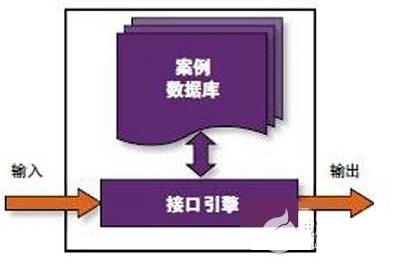
Figure 1 is based on the case-based reasoning system, and rules-based systems, case-based reasoning system is good at presenting human information; the same time, case-based reasoning system also has to learn from the past to create new cases The ability of the case. Many expert systems are redeveloped with a program called the "shell" that is an expert system equipped with a complete set of inference and knowledge storage devices but without the knowledge in the relevant field. The construction of some complex expert systems relies on a "development environment," which is more flexible than shell applications and gives users the opportunity to build custom judgments and knowledge rendering methods.
Expert systems are perhaps the most mature of these technologies, with many commercial shell systems and development tools available. Once an area of knowledge is imported into an expert system, the process of building an entire system is relatively straightforward. Because of the expert system is easy to use, so widely used. There are many applications in sensor systems, including sensor selection, resolving signals, condition monitoring, troubleshooting, machine and process control, machine design, process planning, production planning and system configuration. Expert system applications include assembly, automatic programming, control of complex smart vehicles, inspection planning, forecasting of hazards, selection tools and machining strategies, process planning and control of plant expansions.
3, fuzzy logic
The common rule expert system has one disadvantage that it can not cope with situations beyond the knowledge database. When this happens, these rules system can not give the result. When these conditions occur, the system "crashes" rather than behaving like a human expert shows performance degradation in the face of new problems. The use of fuzzy logic, the introduction of human judgment has the stereotypes and imprecise features, can improve the adaptability of expert systems. Fuzzy logic turns variable values into a linguistic description, the meaning of which is the fuzzy set, on the basis of which the judgments are made.
Fuzzy expert systems use fuzzy logic to deal with the uncertainty of incomplete data or partially corrupted data. This technique uses the mathematical theory of fuzzy sets to simulate the process of human judgment. It is easy for humans to cope with ambiguous situations (gray areas) in the decision-making process, which machines find difficult. Figure 2 shows the architecture of the fuzzy logic controller.
Figure 2 shows the architecture of the fuzzy logic controller.
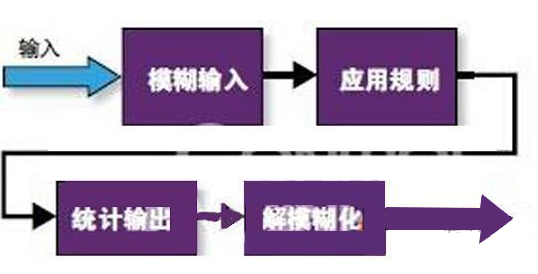
Fuzzy logic has many applications in sensor systems because the knowledge in this area is not accurate. Fuzzy logic is ideal for those areas where the structure and objects can not be precisely matched, where resolution is limited, digital reconstruction methods, and image processing. In the field of structural object recognition and scene analysis have fuzzy set of applications. Fuzzy expert systems are suitable for situations where uncertainty and imprecision are required. They do not have the ability to learn, because the system's key parameters have been preset, can not be changed. Fuzzy logic has won successes in the field of cooperative robots, automotive robots, perceptual prediction, supply chain management and welding.
4, automatic knowledge acquisition
Collecting knowledge in a particular area to build a knowledge database is complex and time-consuming, often at the bottleneck in building expert systems. Automatic knowledge gathering techniques have been developed to solve this problem. This learning process often requires the use of multiple cases as input for learning. Each case has a variety of attribute parameters, and classified by type. One method is to use "divide and conquer strategy" to filter various attributes according to a certain strategy, divide the original case set into sub-sets, and then summarize the learning process to establish the decision tree and correctly classify the given case set. Decision trees can represent what knowledge is generated from a particular case in a collection. This method can also be applied later to deal with cases that are not covered by the case set.
The other is called the "overlay" method. The goal of the induction learning program is to find a set of attributes that are commonly held by a type of case and use that common attribute as part of "if" For the "then" part. The program removes the cases that meet the rules in the collection until there are no common attributes.
Another way to use logical programs instead of propositional logic is to describe the case and express the new concept. This approach uses more powerful predictive logic to describe training cases and contexts and then expresses new concepts. Predictive logic allows the use of different types of training cases and contexts that allow the result of the induction process (inductive concept) to be described as a first-order clause with variables, not just the zero-order propositions made up of attribute-value pairs sentence. There are mainly two types of such systems, the first one is from the induction / summary method, and the second one is the principle of reverse analysis.
There have been a lot of learning programs, such as ID3, which is a divide and conquer strategy program; the AQ program uses the overlay method; the FOIL program is an ILP system that uses the inductive / summative method; the GOLEM program uses the reverse analysis method ILP system. Although most programs produce clear rules for decision making, there are algorithms that can produce fuzzy rules. Requiring that the collection of cases in a rigorous format (explicit attributes and well-defined categories) be easily met in sensor systems and sensor networks, auto-learning techniques are widely used in sensor systems. This type of learning is suitable for those properties that are represented discretely or symbolically, not for sensor system cases with continuous property values. Some examples of inferred learning applications include laser cutting, ore detection, and robotic applications.
Figure 3 shows a virtual system flow chart showing how the system collects data from the image sensor. Visual data and CAD model data are used in conjunction to determine the object list, which is then sent to the weld identification module, which then uses Artificial Intelligence technology to define the welding requirements.
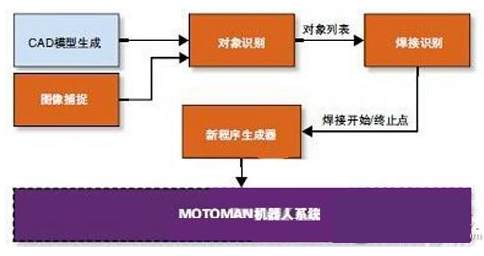
5, neural network
Neural networks can also extract domain knowledge from cases, and the domain knowledge they extract is not characterized in terms of representation, such as rules or decision trees, and they can handle both continuous and discrete data simultaneously. They also have good inductive capabilities similar to fuzzy expert systems. Neural networks are computer models of the brain. Neural network models usually assume that computations can be described using a number of simple units called neurons that can be connected to each other in parallel.
The most common neural network is the multilayer sensor, which is a feedforward network: all signals are transmitted in one direction, from input to output. The feedforward network can statically map input and output space: the output at one time only functions as a function of the input at that moment. In a periodic network, some neurons output feedback to the same neuron or back to previous neurons, which can be considered as dynamic memory. The output of this network at a certain moment is affected by the current input and the previous input and output .
Indiscriminate "knowledge" is built into the neural network by training neural networks. Some neural networks can be trained using a predefined set of specific input patterns to produce the expected output pattern. The difference between the actual output and the expected output is used to correct the strength and weight of the connections between the neurons. This method is called supervised training. In multilayer perceptrons, supervised training of the backpropagation algorithm is usually used to spread the error from the output neurons, and then calculate the correction weight of the hidden layer neurons.
Artificial neural networks usually have inputs and outputs that perform processing tasks in hidden layers between input and output. Inputs are independent variables, and the output is interrelated. Artificial neural networks are flexible mathematical equations with configurable internal parameters. In order to accurately show the complex relationships, these parameters are adjusted by training algorithms. In simple training mode, the input case and the corresponding expected output are simultaneously presented to the network, and the self-tuning process is repeated through as many cases as possible. Once the training is over, the artificial neural network is able to accept completely new inputs and predict the correct output.
In order to produce output, the network only needs to be calculated according to the equation. The only assumption is that there is some kind of continuous functional relationship between the input data and the output data. Neural networks apply to mapping devices, pattern classification, or pattern completion (auto-associative content addressing memory and pattern correlators).
Figure 4 shows the sensor system soldering requirements for the welding identification module recommendations. This module assesses and decides the best welding path. The suggestion is then sent to the actual robot program generator.
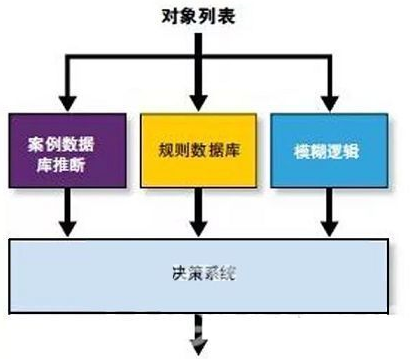
Recent applications include feature recognition, heat exchangers, solder joint inspection, spot welding parameter optimization, power, tactile display and vehicle sensing systems.
6, genetic algorithm
Genetic algorithm is a stochastic optimization process, which is inspired by the natural evolution. Genetic algorithms generate global optimal solutions in complex multi-directional searches without the need for specific knowledge of the problem itself. Genetic algorithms have found use in sensor systems, including complex combinations or multi-parameter optimization, including assembly, assembly line balancing, fault diagnosis, health monitoring, and power steering.
7, the environment is smart
Environmental intelligence has gained momentum in recent decades, witnessing the human convenience of working in a digitally controlled environment in which electronic devices can anticipate their behavior and respond. The concept of environment intelligence is used to seamlessly match human and sensor systems to meet the actual expected needs. There are limits to the applications in the industrial arena, but new, smarter and more interactive systems are already at the research stage.
Expand the system
Artificial intelligence can increase the effectiveness of communication, reduce failures, minimize errors and extend the life of the sensor. For the past 40 years, artificial intelligence technology has brought a series of powerful tools, as listed above. These tools are becoming more widely used in sensor systems. Proper adoption of new AI techniques will help build more competitive sensor systems. Harvatek may need another 10-year engineer to accept them because of the strangeness of engineers and the technical barriers that still exist to use these tools. However, research in this field will not stop, and many new sensor applications are emerging. The use of these technologies will play a greater role.
From the application of smart factories to the implementation of monitoring networks such as power grids, airlines and highways, the field of sensor development has been constantly expanding. After the plan landed, it is now proposed to fly into the tens of thousands of artificial intelligence, household products will become more and more intelligent, all-Internet era is the rapid development of the future, people's lives may be inseparable from all aspects of the most basic sensors. This is a great opportunity for the sensor industry.
Opportunities are often accompanied by challenges, the sensor industry is also faced with many problems, how to develop the sensor in line with market trends and program requirements? How to make the sensor stand out in the same sensor? Only by following the trend of the development of the times, can we have the right direction, master the core technology, to be invincible, for the sensor industry, only to seize this opportunity, focusing on research and development and market demand, to the next level .





